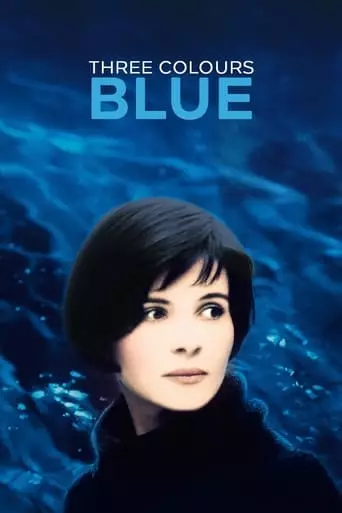
Three Colors: Blue (1993) Watch Online Free
The wife of a famous composer survives a car accident that kills her husband and daughter. Now alone, she shakes off her old identity and explores her newfound freedom but finds that she is unbreakably bound to other humans, including her husband’s mistress, whose existence she never suspected.
Three Colors: Blue is the first installment of Krzysztof Kieslowski’s Three Colors trilogy, exploring the theme of liberty through the life of Julie (Juliette Binoche). The film opens with a tragic car accident that claims the lives of Julie’s husband, a renowned composer, and their young daughter. Devastated by the loss, Julie isolates herself from the world, moving into a new apartment and attempting to sever all emotional ties to her past. She is determined to live free from any attachments, rejecting both the memories of her family and the possessions that once defined her life.
As Julie struggles to rebuild her existence, she is confronted by remnants of her past: unfinished musical compositions left by her husband, the presence of his mistress, and her mother, who suffers from Alzheimer’s. Julie’s journey of self-reconstruction is complicated by her encounters with others, including Olivier (Benoît Régent), her husband’s collaborator, and Sandrine (Florence Pernel), the mistress. Through these interactions, Julie is forced to confront her grief and the unhealed wounds of her past, leading her to reconsider her choices about freedom, love, and memory.
The central theme of Three Colors: Blue is liberty, as it explores the emotional and psychological consequences of loss and the quest for personal freedom. Julie’s desire to sever all connections reflects a desire to live unburdened by the weight of memory and past relationships. However, Kieslowski’s direction reveals that true freedom cannot be achieved through isolation. Julie’s interactions with others, particularly the unfinished musical compositions and the discovery of her husband’s affair, force her to engage with her past in ways she cannot avoid.
The film also delves into the complexity of mourning and emotional repression. Julie’s attempts to escape her memories are symbolized by the recurring motif of the color blue, which represents both her emotional state and her struggle for freedom. The blue lighting and the imagery of water, particularly in the swimming pool scenes, emphasize her attempts to drown out the past, but the emotional weight of her memories continuously resurfaces, making it impossible for her to fully escape.
Kieslowski’s use of visual storytelling, including the symbolic use of color and the recurring motif of the unfinished concerto, further deepens the narrative’s exploration of memory, identity, and loss. The film’s pacing, which is slow and contemplative, encourages the viewer to reflect on the themes of grief and healing.
Three Colors: Blue had a significant impact on both audiences and critics, becoming one of Kieslowski’s most celebrated works. The film’s exploration of personal freedom and mourning resonated deeply with viewers, particularly through Juliette Binoche’s nuanced performance. The film’s ability to convey complex emotional states through visual and auditory means was praised for its innovation and subtlety. Kieslowski’s meticulous use of color and sound, combined with his focus on character-driven storytelling, helped solidify his reputation as one of the most important filmmakers of the 1990s.
The film also played a key role in the success of the Three Colors trilogy, which became a landmark in international cinema. Blue is often cited as a masterclass in how to blend personal and universal themes, creating a cinematic experience that is both intimate and expansive.
After watching Three Colors: Blue, you may feel a deep sense of reflection and introspection. The film’s exploration of grief, memory, and personal freedom may leave you contemplating your own relationships and the ways in which you process loss. The emotional weight of Julie’s journey, combined with the film’s haunting visuals and music, may evoke a sense of melancholy, but also a quiet sense of catharsis. You might find yourself reflecting on the nature of human connections and the complexities of moving forward after tragedy. The film’s open-ended conclusion might leave you pondering the unresolved questions of the characters’ lives, making it a film that lingers in the mind long after the credits roll
